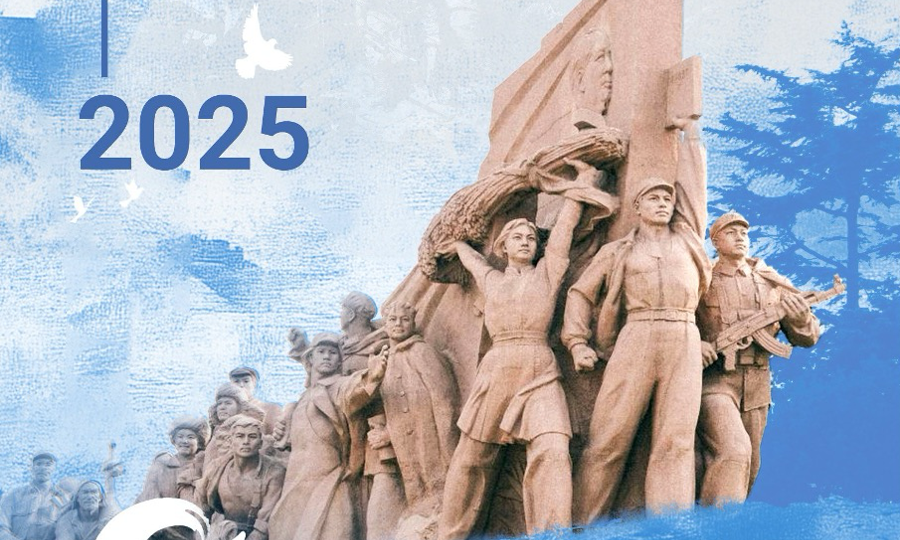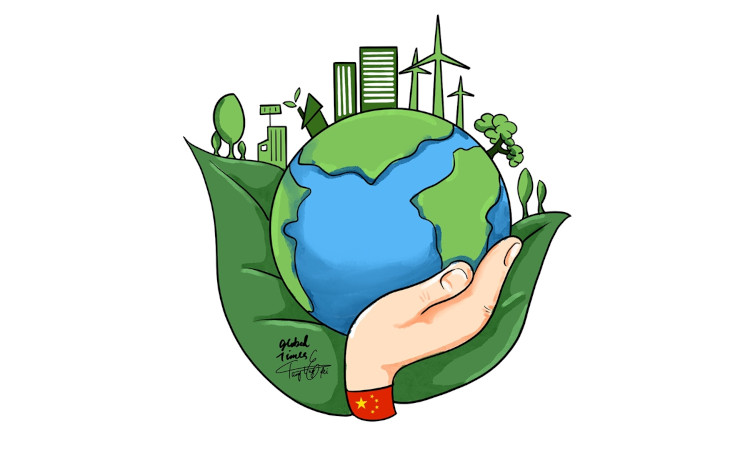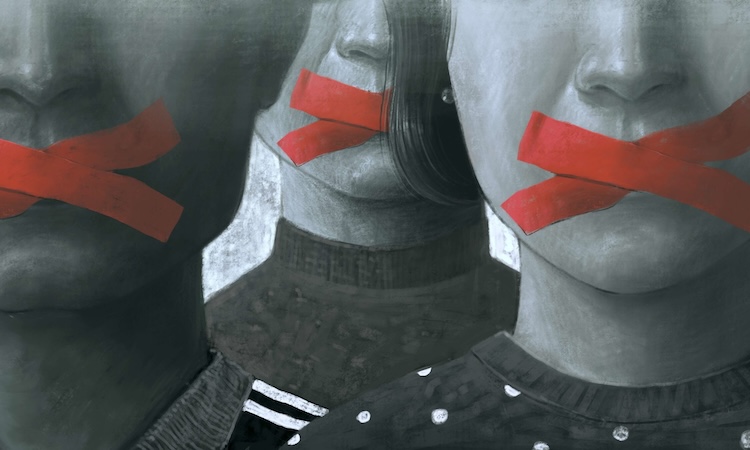Imperialist powers feeling threatened by the rise of China are relentless in their disinformation campaigns designed to foment unrest and weaken China internally, as well as to undermine its international support. The crocodile tears splashed with monotonous regularity all over the bourgeois media concerning supposed human rights abuses against China’s Uyghur muslim minority are very much a case in point.
We are asked to believe, by means of a daily diet of lying propaganda, that China’s muslims have been rounded up en masse into concentration camps where they have been tortured and brainwashed with a view to getting them to abandon their cultural heritage. What wicked nonsense!
As Xinjiang province borders onto several muslim majority countries, it has been possible for troublemakers to infiltrate from states such as Pakistan or Afghanistan. These provocateurs have been trained by US imperialism or its Saudi sidekicks to use muslims’ religious beliefs, suitably distorted, to mobilise them unwittingly to serve all kinds of imperialist causes, including the balkanisation of China.
The technique involves working on local grievances (such as can be found amongst all populations anywhere in the world) inculcating a sense of victimhood among the target population that will make some of them receptive to the idea of taking ‘revenge’ against people who are usually wholly innocent.
The imperialists are thus able to provoke terror attacks against non-muslims resident in the region. Terror attacks and explosives have killed hundreds of civilians in busy shopping areas and crowded train and bus stations since the 1990s.
Naturally, China cannot tolerate this any more than any other state would tolerate terrorist activity within its borders.
To avert jihadi terrorism on their own soil, the US and Britain round up those found to be planning terrorist activity and put them in prisons that operate as jihadi indoctrination centres. According to The Times, muslims make up 16 percent of Britain’s prison population although they constitute only about 5 percent of the general population, the high percentage being accounted for by increased incarceration of extremists.
Consequently it is hardly surprising that: “Islamist extremists in Britain’s prisons are holding makeshift sharia trials, circulating banned books and openly grooming young muslim inmates …
“A former prisoner who claims that he took part in sharia courts and punishment beatings has given a detailed account of how he came to join a group of prisoners at HMP Woodhill, Milton Keynes, who pledged allegiance to Isis …
“The issue came under scrutiny last month when Usman Khan, 28, a Category A terrorist prisoner freed on licence, murdered two people at London Bridge before being killed by police.” (Islamist extremists hold sharia trials and groom young muslims in British prisons by Sean O’Neill, The Times, 23 December 2019)
In the US too, muslims make up about 9 percent of state prisoners, though they are only about 1 percent of the US population.
It follows that neither the US nor Britain has the slightest right to point the finger at China for taking measures to deal with jihadi radicalisation amongst its own muslim population.
What has to be appreciated about the Chinese approach to the problem is that its government does not consider that the solution lies in locking people up and throwing away the key.
Even if a million muslims have been taken to centres for deradicalisation, their number is insignificant in comparison with the proportion of muslims in the population, and certainly a far lower percentage than are incarcerated in Britain or the US. A million people represents less than 0.1 percent of the Chinese population of 1.4 billion, while muslims are estimated to make up nearly 3 percent of the population as a whole, ie, some 45 million people.
China’s deradicalisation centres are not designed for the same purpose as British prisons, the latter being intended primarily to punish, while the former focus entirely on reforming those detained so that on release they can go on to lead useful lives. The purpose of the camps is solely to provide vocational and civic training in order as to minimise people’s vulnerability to typical jihadi radicalisation methods and scripts.
In addition, the Chinese state has been investing massive resources in hastening the development of Xinjiang for the benefit of its citizens.
Recently, Shohrat Zakir, chairman of the Uyghur autonomous region of China and himself a Uyghur, addressed a press conference in which he outlined the measures being taken by China in its Xinjiang region:
“Xinjiang’s economic development has realised a historic leap. Its GDP increased from 791m yuan in 1952 to 1.2tn yuan in 2018. Adjusted for inflation, this represents a 200-fold increase, with an average annual gain of 8.3 percent. Xinjiang’s per capita GDP rose to 49,000 yuan in 2018, from 166 yuan in 1952, and that’s approximately a 37.7-fold increase in real terms, averaging 5.7 percent annual growth.
“After seventy years of development, Xinjiang’s overall agricultural production capacity and its possession of modernised equipment have notably improved. It has China’s biggest production centre of cotton, and it also leads the nation in agricultural water-saving irrigation and mechanised farming.
“The region’s industry started from scratch and has formed a fully-fledged modern industrial system. Some production technologies in regard to new energy, new materials and equipment manufacturing have taken the lead domestically and even in the world.
“More and more modernised cities have emerged as shining pearls in the Gobi desert. Stretching from north to south and connecting the hinterland with the world, Xinjiang’s modern comprehensive transportation system has been basically completed.
“All prefectures and cities are connected by highways. Road network connectivity among administrative villages has reached 99.74 percent. The length of in-service railways totals 5,959 kilometres. Alongside the rest of China, Xinjiang has also entered the era of high-speed railways, which now links Urumqi to the rest of the country.
“We have also entered the era of subway, as the subway in Urumqi has already begun operating. There are 21 civilian airports in Xinjiang, and airlines have become the top choice for people to visit us and travel within the region.
“In recent years, we have made good use of Xinjiang’s geographical advantages, and seized the major opportunities presented by the Belt and Road Initiative. We are committed to promoting openness both at home and abroad, and turning Xinjiang into a key region on the Silk Road Economic Belt, as well as a major window in China’s opening to the west.
“In 2018, Xinjiang’s total imports and exports were $20bn. This is 1,481 times greater than it was in 1950. We have made good use of our unique tourism resources, implementing the strategy of developing Xinjiang through tourism.
“The potential created by stability is fully utilised as well. Tourism has seen a significant upsurge in recent years. Xinjiang received more than 150 million domestic and foreign tourists in 2018, a year-on-year growth of 40.1 percent, and 75.89 million tourists visited in the first half of this year, up 46 percent year-on-year.
“We expect to receive more than 200 million visitors this year. And we hope to present the charm, prosperity, and stability of Xinjiang to the world.
“Second, the living standard of people of all ethnic groups has achieved a historic improvement. Per capita income of urban residents jumped from 319 yuan in 1978 to 32,764 yuan in 2018, an average annual growth of 12.3 percent; that of rural residents went up from 119 yuan in 1978 to 11,975 yuan in 2018, an average annual growth of 12.2 percent.
“Xinjiang Uigur Autonomous Region has greatly improved the clothing, food, accommodation, and transportation conditions of the people of all ethnic groups, ensuring that the problems of hunger, cold, water and power supply shortages, and inaccessibility to the outside world that previously haunted this land are a thing of the past.
“Since the 18th CPC national congress, with a stress on people-centred and livelihood-centred development, Xinjiang has, for many years, spent more than 70 percent of its public budget expenditures on improving public livelihoods and continuously boosting welfare programmes focusing on employment, education, medical services, social security and housing etc.
“Many pressing livelihood issues bearing on the people’s immediate interests have been solved. Xinjiang has provided ‘zero-employment’ families with jobs in a timely manner, implemented the policy of free annual physical examination, achieved three-year free pre-school education in rural areas, carried out rural housing projects and built permanent housing for nomadic herdsmen, established a healthcare insurance system to treat critical illnesses, and provided basic living allowances to eligible rural and urban residents.
“People of all ethnic groups in Xinjiang have enjoyed a stronger sense of gain, of happiness and of security. To complete the building of a moderately prosperous society in all respects, we are focusing on poverty-stricken areas in the four prefectures of southern Xinjiang and have made clear gains in eradicating poverty.
“From 2014 to 2018, during a new round of the poverty alleviation campaign, 2.31 million people shook off the shackles of poverty, and the impoverishment rate in rural Xinjiang dropped from 19.4 percent to 6.1 percent.
“By 2020, like the rest of China, Xinjiang will lift its impoverished population totally out of poverty by current set standards. We will leave no one behind. Together with the whole nation, Xinjiang will make great efforts to finish building a moderately prosperous society in all respects within the set timeframe.
“Third, our social undertakings have achieved historic breakthroughs. In the early years after liberation, the net enrolment ratio of school-age children was under 20 percent, the illiteracy rate was as high as 90 percent, and the average life expectancy was merely 30 years.
“Over the past seventy years, we popularised nine-year compulsory education and provided free three-year pre-school education and twelve-year basic education in southern Xinjiang. In 2018, the enrolment ratio of kindergartens was 95.95 percent, and the enrolment ratio of school-age children in primary schools was 99.91 percent.
“The central government has also organised Xinjiang senior high school class in some of the most developed cities in other provinces to offer better and free education for students from Xinjiang’s farming and pastural zones, a scheme that has benefited 110,000 students so far.
“Xinjiang has also set up a relatively complete county-township-village three-tier disease prevention and health system. The average life expectancy has now risen to 72.35 years.
“We highly value the protection and development of traditional ethnic cultures. The Xinjiang Uigur Muqam and Kirgiz epic ‘Manas’ were inscribed on the Representative List of Intangible Cultural Heritage of Humanity and the List of the Intangible Cultural Heritage Requiring Urgent Protection.
“Xinjiang has built a four-tier public cultural service system from the autonomous region down to prefectures, counties and townships. Each county has a cultural centre, each township has a cultural station and each village has a cultural hub, enriching people’s daily life.”
So why the imperialist campaign for Uyghurs’ ‘human rights’?
Imperialism has its eye on Xinjiang for a number of reasons, the first of which, of course, is its interest in destabilising China.
However, Xinjiang is attractive to imperialism for other reasons too.
– It is China’s largest gas-producing region and has significant oil and mineral reserves.
– It is a major centre for China’s Belt and Road Initiative and a gateway to central and west Asia, as well as to European markets.
– It has been for four decades a source of mercenaries open to recruitment by the CIA and secret Pakistani ISI forces for use against imperialist targets, including China itself. Fanatical Uyghurs have served with Islamic State and al-Qaeda, with many of them ending up at Guantanamo Bay when these organisations turned against their master.
Beginning in 2013, thousands of Uyghur fighters were smuggled into Syria to train with the extremist Uyghur group known as the Turkistan Islamic party and fought alongside al-Qaeda and al-Nusra terror units in several battles.
Independent countries defend China’s record in Xinjiang
China is constantly inviting those who parrot the imperialist line about human rights abuses in Xinjiang to visit the area to see for themselves. But of course most of them parrot the line not because they believe it but to please imperialism.
However, plenty of serious people have taken up the offer and have been to see for themselves, and they have to conclude that there are no human rights abuses taking place there:
“In July of this year, 22 countries, most in Europe plus Canada, Japan, Australia and New Zealand, sent a letter to the UN human rights council criticizing China for mass arbitrary detentions and other violations against muslims in China’s Xinjiang region. The statement did not include a single signature from a muslim-majority state.
“Days later, a far larger group of 34 countries – now expanded to 54 from Asia, Africa and Latin America – submitted a letter in defence of China’s policies. These countries expressed their firm support of China’s counterterrorism and deradicalisation measures in Xinjiang.
“More than a dozen member countries of the Organization of Islamic Cooperation at the UN signed the statement.
“A further statement on 31 October to the third committee of the UN general assembly explained that a number of diplomats, international organisations, officials and journalists had travelled to Xinjiang to witness the progress of the human rights cause and the outcomes of counterterrorism and deradicalisation.
“‘What they saw and heard in Xinjiang completely contradicted what was reported in the [western] media,’ said the statement.” (Behind the US anti-China campaign by Sara Flounders, Workers World, 18 December 2019)
Leading imperialist countries, especially the US, have committed unbelievable crimes against vast swathes of humanity. Confining ourselves to the decades since the end of the second world war, the US has waged genocidal wars of aggression against the people of Korea, Vietnam, Yugoslavia, Afghanistan, Iraq, and Libya, to name just a few – in the process killing several million innocent people, devastating their infrastructure and destroying their economies.
It continues to wage proxy wars against countries such as Syria, Iran, Venezuela, Cuba and Nicaragua, and it has weaponised financial and trade sanctions as a tool of its foreign policy to intimidate and subdue countries that refuse to obey its diktat.
Moreover, it has the largest prison population in the world as a proportion of its total population. It maintains 100 prisons around the world where it is illegally imprisoning, torturing an subjecting to ill-treatment some 25,000 people. It is the country that achieved notoriety through its torture chambers at Abu Ghraib and Guantanamo.
In the light of these facts, instead of pointing fingers at other countries and posing as the guardians of freedom, democracy and the rule of law, the political and ideological representatives of the US should be hiding their faces in shame.
But since it is clear that the imperialists have no shame, it is past time for the rest of us to stop taking notice of their constant barrage of false accusations and to recognise these lies for what they are: a threadbare cover for the naked warmongering of a decadent and parasitic imperialist class.














